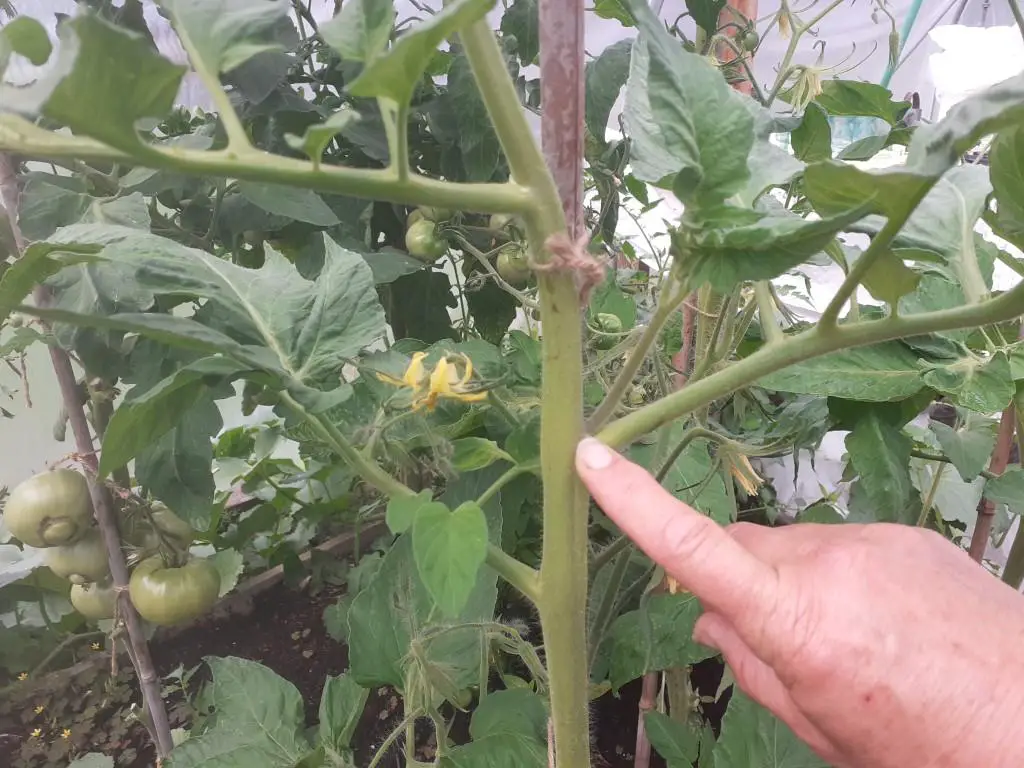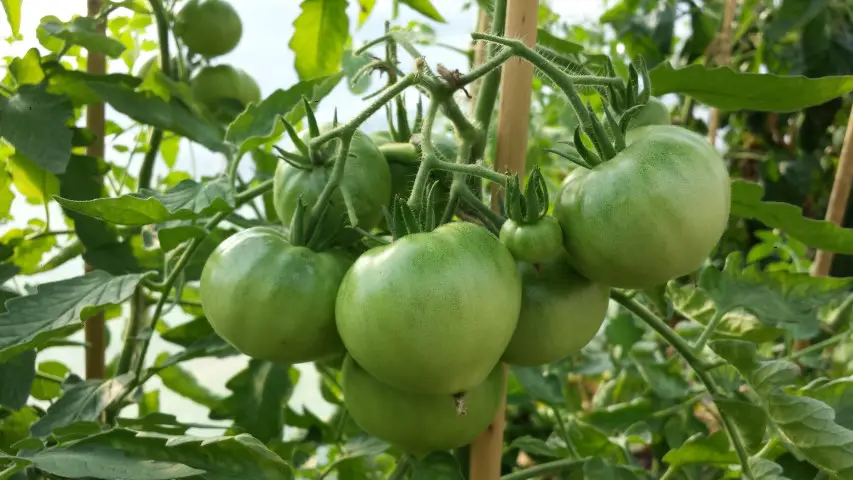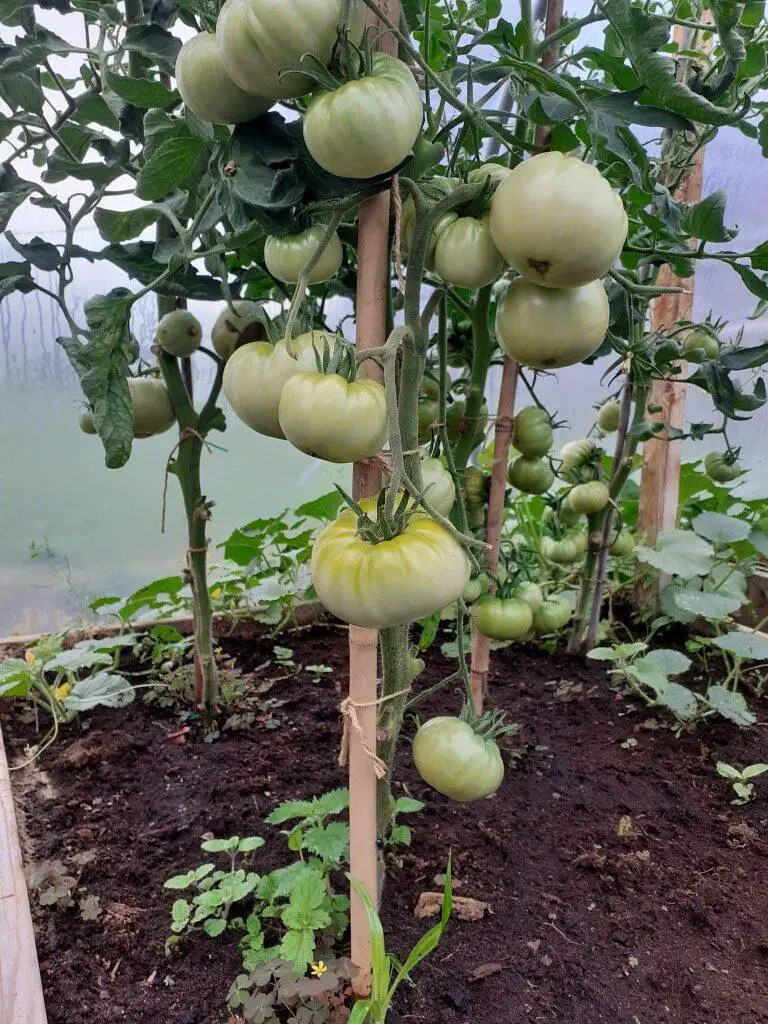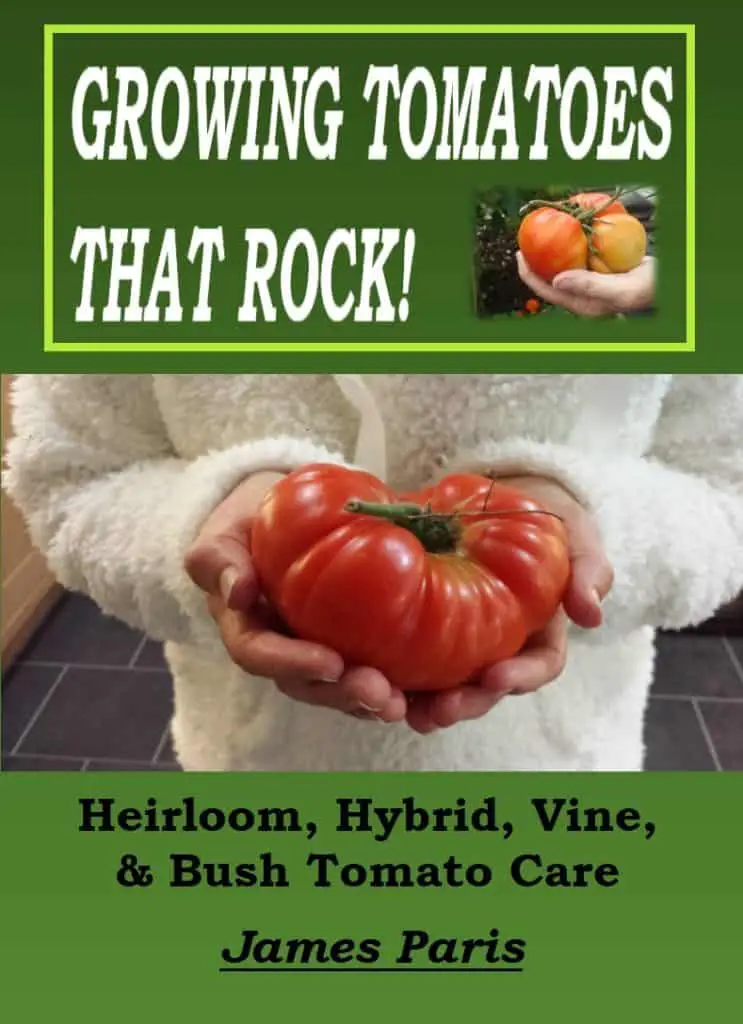In order to get more fruit or maximum yield from your tomato plants and thereby increase the overall production, you must first of all be aware of the type of plant you are growing.
Bush tomato plants for example and ‘determinate’ tomato plant do not require trimming or pruning at all.
The act of trimming is reserved for the ‘indeterminate’ Cordon or ‘vine’ varieties. These will grow completely out of control and potentially ruin your harvest if they are not correctly, and regularly, trimmed as they grow.
Why prune tomato plants at all?
Quite apart from the negative effect on the tomato harvest overall, there is a matter of tomato plant health to consider.
If the plants are not trimmed and allow to bush out in all directions, there is a much higher probability that they will suffer from disease. This is owing to the fact that the thick foliage traps moisture and makes a perfect environment for fungus and pests to gain a foothold.
Healthy tomato plants, especially if grown under cover in a greenhouse or polytunnel, need a good flow of air between the plants. This regulates the temperature, stops moisture from gathering to create fungus, and reduces overall probability of disease.
If the leaves are not removed then not only does it restrict air flow, but also the harvest, as the plant is feeding the leaves and in effect reducing nutrients to the fruit – resulting in a lower yield of tomatoes.
How to trim indeterminate tomatoes
In a nutshell, to trim a plant you must remove the side-shoots sprouting between the stem and leaf of the plant. Then remove the leaves on at least one third of the plant starting from the base.
This is not a ‘one off’ process, but is something that must be done several times per week in the growing season – if not on an almost daily basis.
Tomato plants are very fast growers once the temperature warms up, and the side-shoots near the crown of the plant in particular, will soon grow to the point where you can be confused as to which part to cut away!
Popular ‘Vine’ or ‘Indeterminate Tomatoes include – Brandywine, Cherokee Purple, Gigantomo, Sungold, or Money Maker.

When to start trimming tomato plants
Trimming or ‘pruning’ away the side-shoots starts almost immediately, as soon as the plants start to produce the first flowers, if not before.
These side shoots are easy to remove if you get them early enough by simply pinching them firmly between thumb and finger at the base of the stem, and removing them. (be careful not to tear the plant).
If the shoots are a little thick – perhaps if you have missed them as they grew up – then it is best to use a sharp pruning knife of a pair scissors to remove them.
This process has to be repeated as the plant grows as mentioned earlier.
Pruning away the tomato plant leaves
As for the leaves of the plant. I tend to allow the plant to grow at least up to the 2nd and maybe 3rd truss of flowers before I start to remove the leaves.
I do this to allow the stem of the plant to grow thick and strong, a process that is encouraged if the plant has leaves to feed as it grows.
As the plant reaches this point, then (beginning at the base) I will remove the leaves with a pruning knife, careful not to damage the main stem of the plant and thereby encourage disease.
Once this process of pruning has begun then it continues throughout the season in the same way as the side-shoot pruning.
Trimming tomato suckers (shoots that will grow from the base and stem of the tomato plant) is done in a similar way to the leaves and side-shoots throughout the summer.
How many leaves to prune away?
I know some gardeners that prune virtually everything away right up to the crown! For myself, I find that pruning away 2/3rd of the leaves is usually sufficient to produce a good healthy plant and consequent tomato harvest.
By using this technique you will ensure the tomato fruit is getting the maximum nutrients, resulting in the heaviest crop of tomatoes throughout the season.
Why are determinate and bush tomatoes not trimmed?
These tomato varieties are not trimmed, as they are grown for this purpose. For example a ‘bush’ tomato is allowed to ‘bush out’ as the name implies – it is a characteristic of this variety.
Determinate tomatoes only grow to a certain height, unlike the ‘vine’ tomato plant that has to be trimmed. This ensures the tomatoes from the determinate plant will all ripen at once to produce a one-off harvest.
Determinate tomato varieties are not ideal for most gardeners, who prefer to pluck tomatoes throughout the season. However they are perfect for commercial planters who want to harvest one-time, and can the complete crop.
varieties are not ideal for most gardeners, who prefer to pluck tomatoes throughout the season. However they are perfect for commercial planters who want to harvest one-time, and can the complete crop.
Determinate tomatoes are also perfect for stores wishing to sell packaged tomatoes all ripe and looking good ‘on-the-stem’.
Popular Determinate varieties include – Bush Beefsteak, Mountain Delight, Roma, Carolina Gold Hybrid, and Patio Plum.
How high to grow indeterminate tomatoes
This is mainly determined by your own personal desires or the confines of a greenhouse, as the indeterminate varieties will grow to an ‘indeterminate’ height!
Usually however they will be grown up to the sixth or even seventh truss. Any more than this allows the possibility of a mediocre harvest with a less-than-ideal weight of fruit.
Summary:
I have tried both ways – ‘to trim or not to trim’ approach for indeterminate tomato plants, and without question there is a much better harvest when the plant is trimmed in accordance with the above article.
If however you want to leave your plant to it’s own devices and settle for a mediocre harvest of smaller, weaker fruit, then that is your choice!
Good luck with your tomato trimming choice.




